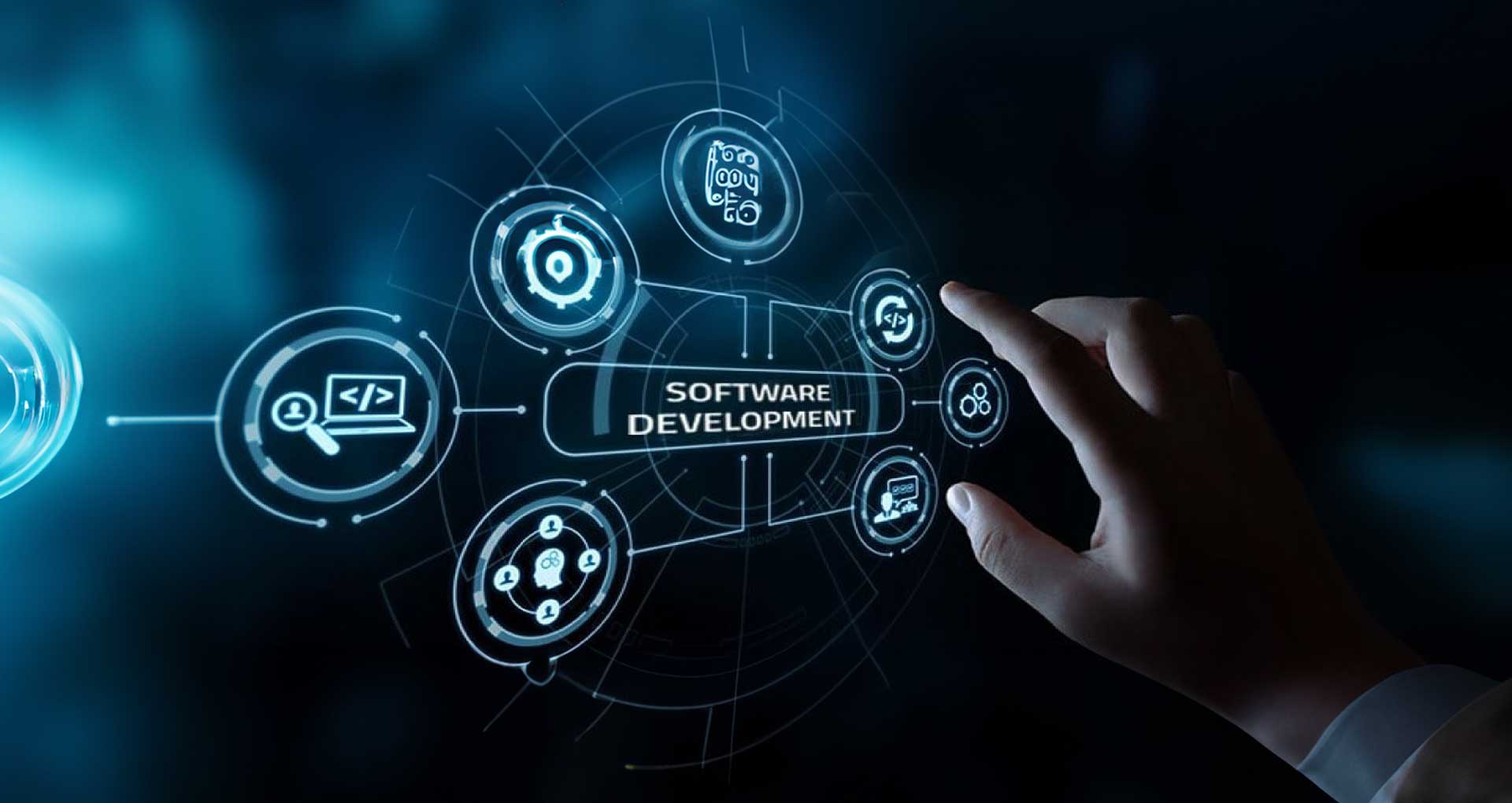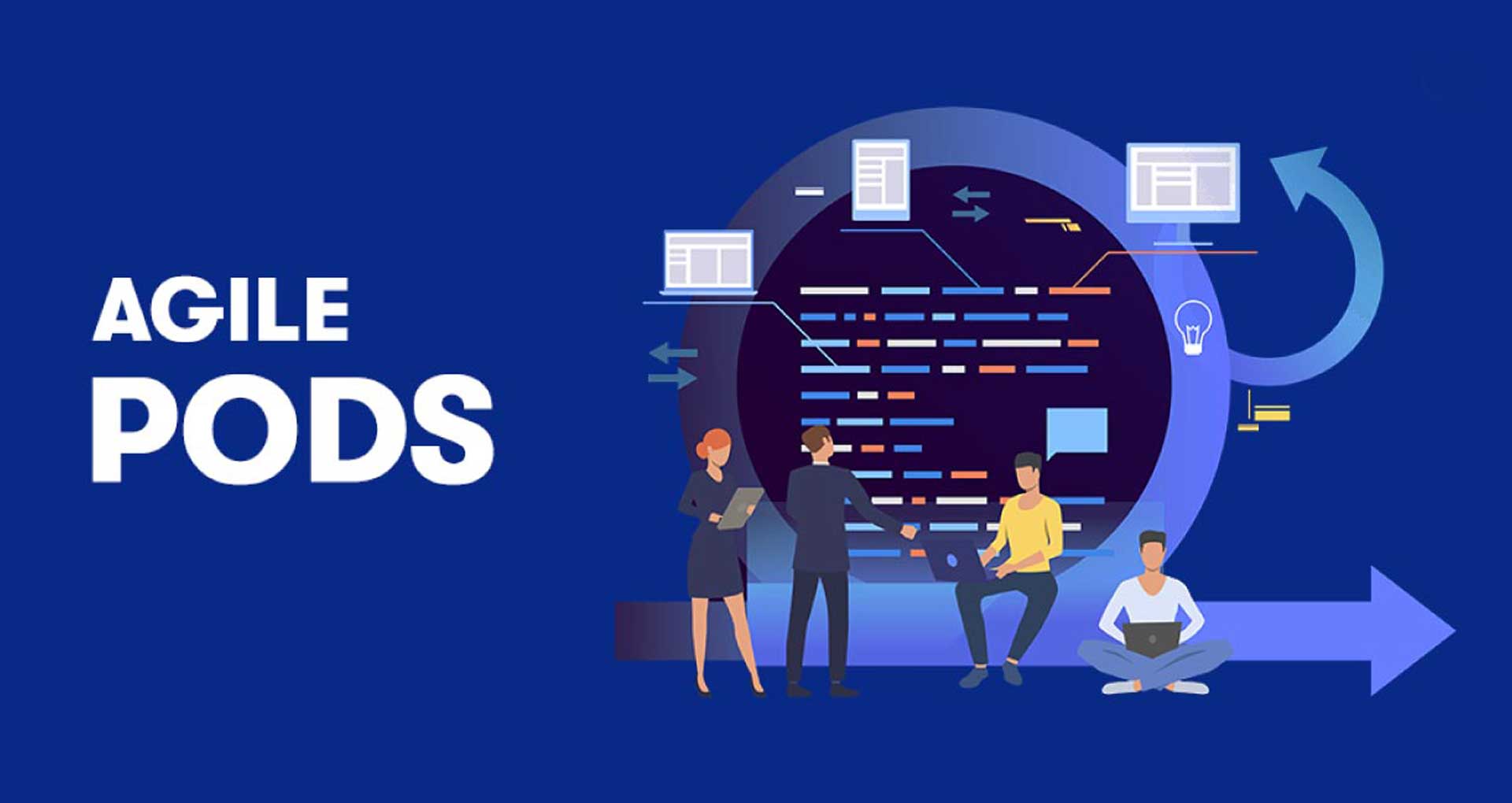Software products are essential components of our daily lives today. From mobile apps to web-based platforms, businesses rely heavily on software products. They help manage operations, reach customers, and stay ahead of the competition. However, as technology evolves exponentially, software products can quickly become outdated and lose their effectiveness. Therefore software product modernization has become a crucial strategy for organizations looking to stay relevant and competitive. And, neglecting to update your product could result in incompatibilities, bugs, and security vulnerabilities that put your business at risk.
So, let’s dive into the concept of successful software product modernization, why it matters, and how you can make it happen. We’ll also look at the business benefits of modernizing your software product and share some best practices to follow along the way.
What is Software Product Modernization?
Software product modernization refers to updating or upgrading an existing product to improve performance, functionality, and security. It would include making changes to the product’s code, architecture, or platform.
While there are many reasons why businesses decide to modernize their software products, some of the most common ones include:
- For Improving Performance: Legacy software products can often be slow and inefficient. Modernizing them could help to improve performance and responsiveness.
- Introducing New Features: As technology evolves, businesses must add new features to their software products to keep up with the competition. And modernizing helps to make this process easier and more efficient.
- Improving Security: Legacy software products are often vulnerable to security threats. Hence modernizing them would help to enhance security & protect organizations from cyberattacks.
- Cost Reduction: Modernizing software products enables reducing costs in numerous ways. Some of them include – manual maintenance & support, deploying new updates & patches & much more.
Different Ways to Modernize Your Software Product
In today’s fast-paced digital world, it’s essential to modernize your software product to meet customer demands and stay competitive. However, choosing the right one for your software product can be overwhelming with so many different modernization strategies available. To help you make an informed choice, we’ve curated different ways to modernize software products with essential elements of product modernization:
- Re-Architecting: It covers rewriting the architecture of the software product to increase scalability, performance, and dependability. It could entail switching the product’s technological stack, implementing microservices, or putting cloud-based infrastructure in place.
- Refactoring: It would include modifying the software product at the code level to increase its readability, extensibility, and maintainability. This could entail reducing unnecessary code, streamlining complex code, and performance-enhancing code optimization.
- UI Modernization: It increases usability, accessibility, and aesthetic appeal. And adopting contemporary UI design principles, streamlining the navigation, and including new features that improve the user experience could all be part of this.
- Integrating New Features: It refers to adding new functionalities to a software product to increase functionality and satisfy evolving business needs. This can entail integrating with external services, creating new modules, or implementing new workflows.
- Adopting DevOps Practices: It would entail optimization of the software product’s development, testing, and deployment processes to increase its agility, quality, and time to market. This might entail establishing continuous integration and delivery (CI/CD) pipelines, using agile approaches, and automating testing and deployment procedures.
- Cloud Migration: As businesses strive to expand and become more efficient, cloud computing usage is growing in popularity. Because of the additional feature of cloud disaster recovery, moving to the cloud might be a fantastic solution if you want to improve your software product. This implies that you may easily retrieve all of your data from physical servers, lowering the likelihood of data loss and providing your clients with security.
Software Product Modernization Process
If you’re looking to bring your software product up to speed with the digital age, you can follow the proven steps below to transform your product for a digital future.

Architecture Audit
- Assess the current state of the software product’s architecture
- Identify any areas that need to be improved
- Develop a plan to enhance the architecture
Code Audit
- Review the code for any potential issues
- Fix any discovered issues
- Refactor the code to improve its readability and maintainability
UX Audit
- Assess the current state of the software product’s user experience
- Identify any areas that need to be improved
- Develop a plan to improve the user experience
Product Strategy
- Define the product’s goals and objectives
- Identify the target audience
- Develop a plan to achieve the product’s goals
UX Design
- Create a high-fidelity prototype of the product’s user interface
- Get feedback from stakeholders and users
- Iterate on the design until it is finalized
Refactoring
- Improve the code’s readability and maintainability
- Remove any unnecessary code
- Add any new code that is needed
Performance Testing
- Test the software product’s performance under a variety of conditions
- Identify any performance bottlenecks
- Fix any performance issues that are found
Quality Assurance
- Test the software product for any potential bugs
- Fix any bugs that are found
Ongoing Roadmap Planning
- Develop a roadmap for future development of the software product.
- Prioritize features and updates
- Track progress against the roadmap
Listed above are generic approaches, although the steps involved in the software product modernization process might vary depending on the organization’s specific needs.
Strategies for Software Product Modernization
A clear roadmap can help you prioritize the right elements to modernize, stay competitive, and improve customer satisfaction – all of which are critical for success in today’s rapidly evolving technology landscape. Listed below are proven strategies that you can employ to modernize your software product successfully:
- Know your customers inside out: Dig deep into your customers’ wants and needs by conducting thorough market research and gathering feedback. Use this valuable information to identify areas that need improvement and prioritize your modernization efforts.
- Get your head in the cloud: Consider moving your software to the cloud, which can make it more accessible and cost-effective. Cloud-based solutions offer scalability, easy data access, and improved collaboration.
- Make user experience your top priority: Focus on creating an intuitive, user-friendly software product that’s easy to navigate. Conduct usability testing to find and fix any pain points.
- Integrate with other tools: Look for opportunities to integrate your software product with different tools and platforms to enhance functionality and provide a more seamless user experience.
- Embrace automation and AI: Streamline workflows and provide advanced analytics and insights by incorporating automation and artificial intelligence features.
- Keep your software product updated: Stay on top of evolving customer needs by regularly updating your software with new features and bug fixes. Provide exceptional customer support to ensure satisfaction and loyalty.
- Stay ahead of the curve: Keep an eye on your competitors and stay abreast of new technologies and trends. Continuously innovate and improve your product to stay ahead of the curve and maintain your competitive edge.
Benefits Of Software Product Modernization
Have you ever thought about how the software products you modernize become the backbone of your client’s business? It’s true! Your clients can achieve their business goals and harness their company’s full potential. There are so many others, including:
- Performance Enhancement: By making software products faster, more effective, and more dependable, modernization can enhance performance. Businesses may benefit from this by saving time and money and increasing customer satisfaction.
- Increased Agility: Contemporary software development methodologies like flexible and DevOps can assist firms in becoming more flexible and responsive to changing customer demands and market conditions.
- Enhanced User Experience: Updating user interfaces, adding fresh features, and improving usability can all help software products become more user-friendly. As a result, customers will be more satisfied and loyal to enterprises.
- Lower Maintenance Costs: Maintaining legacy software products can be costly and time-consuming. Modernizing these goods can cut maintenance expenses by streamlining procedures and removing outdated technology.
- Enhanced Security: Because modern software products include the newest security features and technology, they are typically more secure than legacy systems. This can assist firms in safeguarding their private information and avoiding online threats.
- Advantage Over Competitors: Businesses can get a competitive edge by modernizing their software products to provide superior goods and services to their rivals. By doing this, firms may be able to draw in more clients, keep them, and boost sales.
- Scalability: Modern software solutions are built to be scalable to accommodate rising user traffic and data quantities without compromising performance. Without worrying about their software products staying up as their business grows and expands, this can help.
Successful Examples of Software Product Modernization
Software modernization can help businesses keep up with the demands of a fast-paced digital age by adapting to emerging technologies and trends. Let’s explore some successful examples of software product modernization from industry leaders and how they achieved their goals through different modernization strategies.
- Microsoft Office 365 is one of the most popular productivity tools. With Office 365, Microsoft moved its software product from an on-premise installation to a cloud platform, making it easier and more cost-effective for businesses. Now, teams can collaborate on documents and spreadsheets from anywhere worldwide.
- Netflix is a streaming leader consistently modernizing its platform to provide a seamless and individualized customer experience. To be able to do that, Netflix has been making significant investments in its IT infrastructure and implementing cutting-edge software development techniques. For instance, Netflix uses a microservices architecture to increase scalability and flexibility, and it uses recommendation algorithms driven by AI to give viewers tailored content recommendations.
- Salesforce is another excellent cloud-based customer relationship management (CRM) software that constantly improves to meet dynamic business needs. They continuously add new features like artificial intelligence and data analytics to give customers better insights into their sales and marketing efforts.
- Adobe Creative Cloud is widely used for graphic design, video editing, and web development. It was modernized from a one-time software purchase to a subscription-based model. This change gave its customers access to continuous updates and new features, making their creative work more efficient and up-to-date.
- HubSpot is a preferred marketing automation software that was modernized by adding sales and customer service tools, creating an all-in-one platform for businesses to manage their marketing, sales, and customer support efforts. This upgrade has made the tool more accessible for companies to streamline their processes and stay organized.
Why Choose Rishabh Software For Software Product Modernization Services?
As a software product development services company, we help keep your software product on track, ensure your business objectives are met, and guide you to optimize your resources efficiently. Even after completing your modernization project, we support your business with ongoing maintenance, updates, and troubleshooting. We have experience modernizing software products and can provide valuable insights on what technologies and strategies work best for your business needs.
Listed below are the core services we offer;
- Software Product Assessment And Analysis: It involves thoroughly evaluating the existing software product to identify areas that need improvement and determine the best modernization approach.
- Modernization Strategy Development: We help develop a strategy tailored to the business’s needs and goals.
- Technology Selection And Implementation: We support you in selecting & implement the appropriate modern technologies, tools, and frameworks to support the modernization process.
- Refactoring And Re-Architecting: Our team helps you refactor or re-architect the existing software product to improve its performance, scalability, and maintainability.
- User Interface (UI) Modernization: Our specialist UI team supports you in updating the UI to improve the user experience and make it more visually appealing.
- Legacy Software Product Migration: This involves migrating legacy software to modern technologies, such as cloud-based solutions, to improve their performance and scalability.
There’s been a long debate about whether to go with in-house vs outsourcing product development. Though, if software development is not your forte, why attempt it in-house? Especially when outsourcing product development (OPD) can offer several benefits. From providing skilled and experienced resources to best-in-class development processes while managing everything – from the concept to the deployment stage. Read this blog to learn the specifics of how to outsource product development, what and when to outsource, its benefits, factors to consider before outsourcing, and more
Success Stories
Web-based E-Learning Platform Modernization

An EdTech company wanted to expand its presence across Australia. They partnered with us to modernize their existing web-based eLearning platform with newer features. Their existing solution lacked the scalability for data management, no proper reporting mechanism, and limited capabilities to offer an engaging learning experience.
We recommended upgrading to .NET Core from the existing MVC architecture to enable seamless cross-platform support across devices. The upgraded online learning platform enabled digital management of all processes, from vital administrative functions and communication to attendance monitoring and performance tracking.
Key Takeaways:
- 50% reduction in costs compared to traditional forms of learning
- 2X increase in new student registrations
- 40% improvement in learning outcomes with the introduction of game-based learning
Learn more about how this revamped and fully responsive web-based eLearning platform helped our client maximize their reach and revenue.
Digital Ad Inventory Management Software Modernization

A leading outdoor advertising company wanted to modernize its existing ad inventory management system to tackle the challenges of low booking response time and lack of insights into ad inventory.
To address these issues, we created a central repository for inventory data using JSON, implemented cross-media integration, and recommended AWS as the most flexible and secure services platform. Their revamped system now provides insights into delays and lead times with notification alerts on confirmed delivery dates, delays, and real-time inventory updates.
Key Takeaways:
- 99% reduction in site downtime instances.
- 70% improvement in response time
- 100% improvement in inventory utilization
Read more on how this digital Ad inventory management software modernization helps our client drive more ad bookings and be more profitable.
Concluding Thoughts
Software product modernization helps organizations to stay competitive and adapt to changing customer needs in real-time. While embarking on modernizing your software product journey may seem overwhelming, it’s a crucial step toward progress. It would involve updating legacy software systems, migrating to newer technology stacks, and incorporating new features and functionalities. Though these benefits, such as improved performance, scalability, and security, are significant. And by embracing modernization, companies can optimize their operations, enhance customer experience, and boost their bottom line. With the right approach, tools, and expertise, software product modernization can be a smooth and rewarding journey that transforms businesses. If you’re unsure where to start or have hit a roadblock in your attempts to modernize, contact technology partners like Rishabh Software. We can bring new ideas, approaches, and tools to make your product more efficient, user-friendly, and scalable. After analyzing your technology requirements, we can design, develop & finally deploy your software product.
FAQs
- How is software product modernization different from application modernization?
Software product modernization typically includes updating a product’s user interface, moving it to the cloud, integrating it with other software tools, and adding new features or functionality to meet the evolving needs of your business clients. On the other hand, application modernization involves updating and optimizing an application, regardless of whether it is sold to enterprises or consumers for internal or external use. This could include updating the app’s architecture, migrating it to a new cloud platform, improving its performance, or adding new features to enhance its functionality. - Why should I consider modernizing my software product?
Revamping your software product enables you to stay ahead of the competition by catering to the changing demands of your business customers. This upgrade can lead to a better user experience with more efficient workflows and advanced features that boost your client’s productivity and streamline their operations – ultimately increasing your profitability. - What happens if I don’t modernize my software product?
Failing to modernize your software product can result in decreased customer satisfaction, lower user adoption rates, and, ultimately, lost business to competitors with more modern offerings.











 30 Min
30 Min


